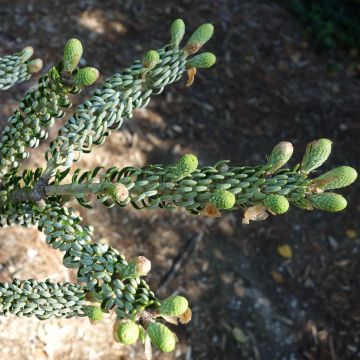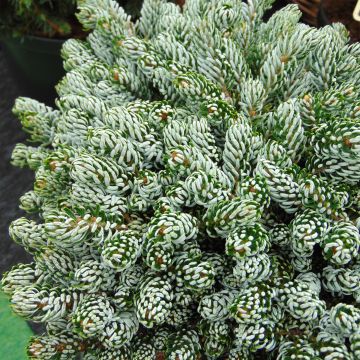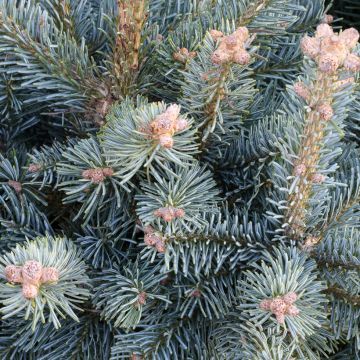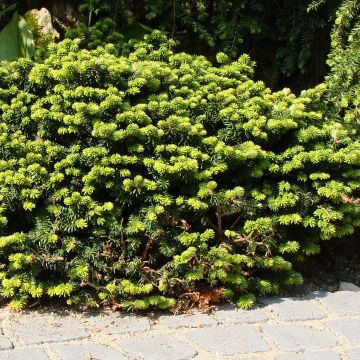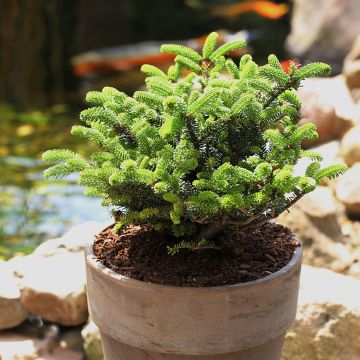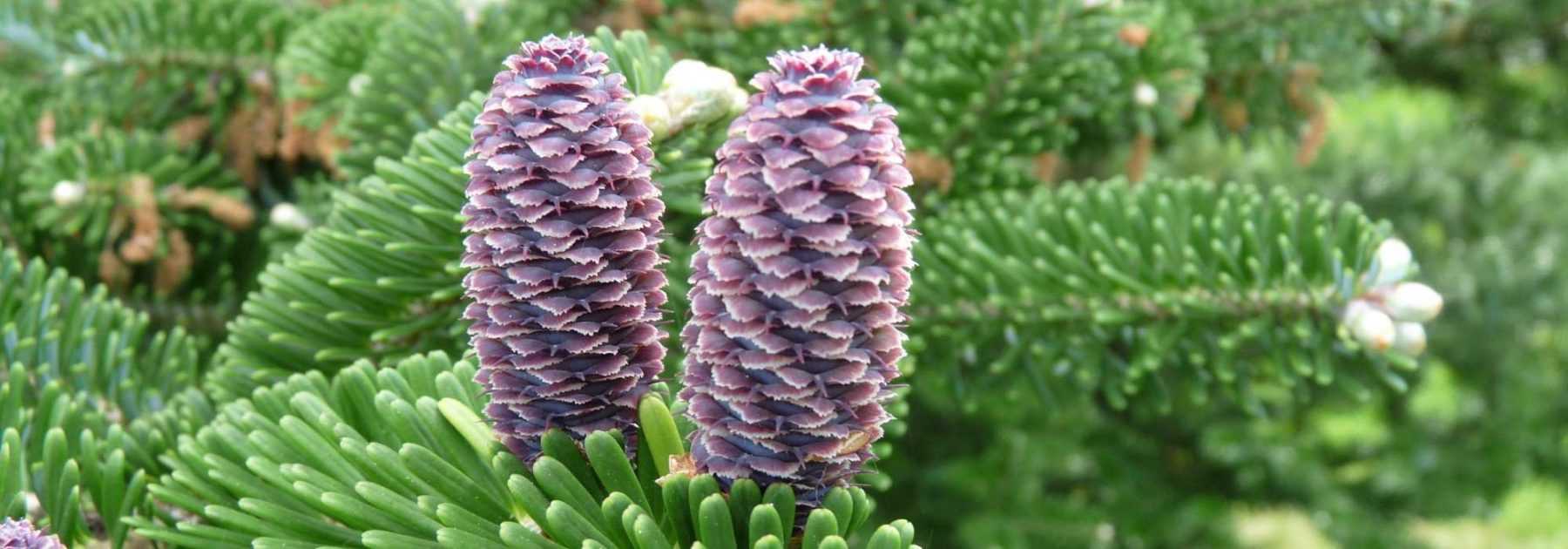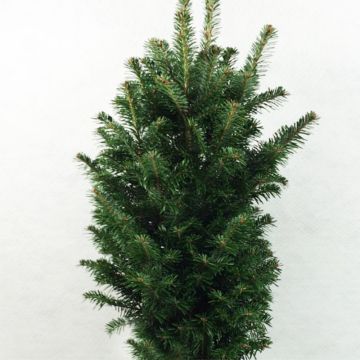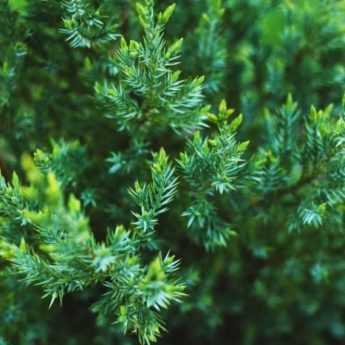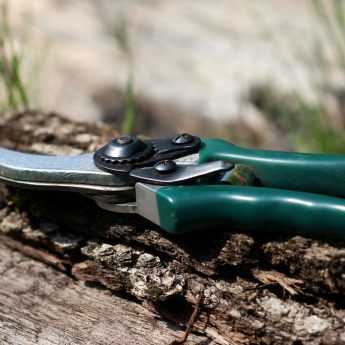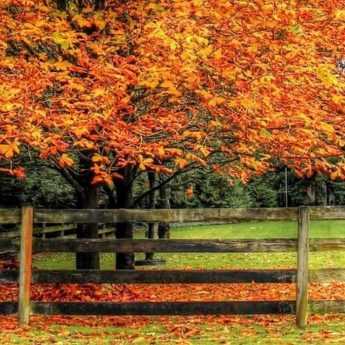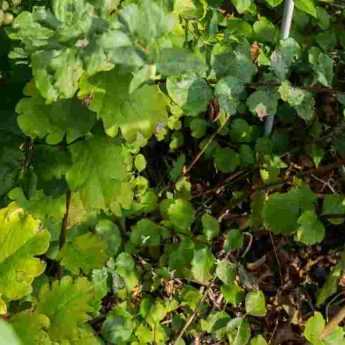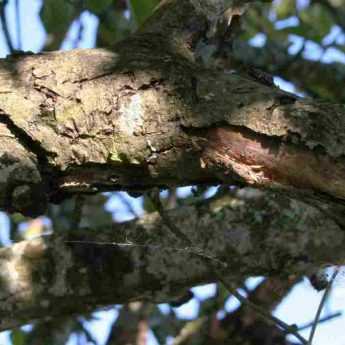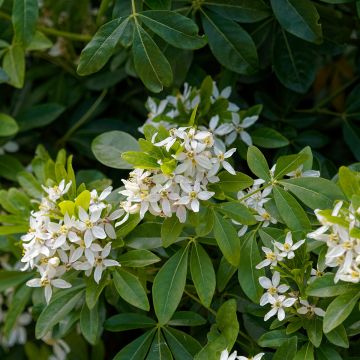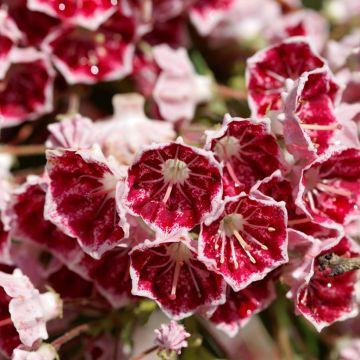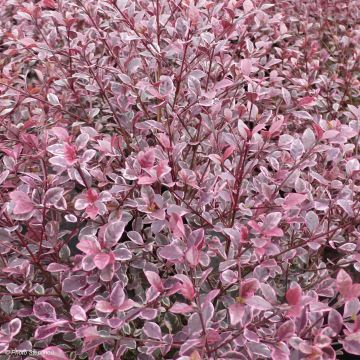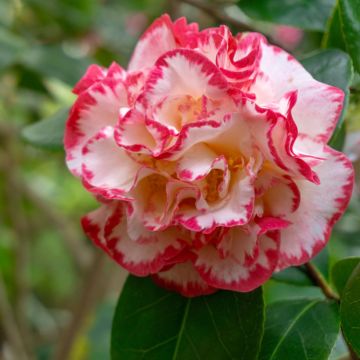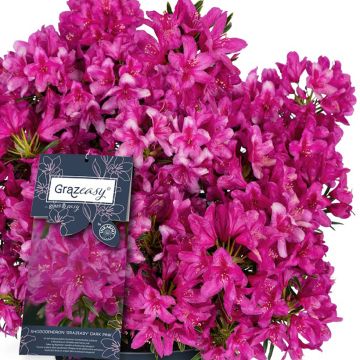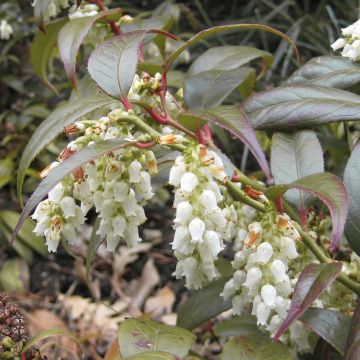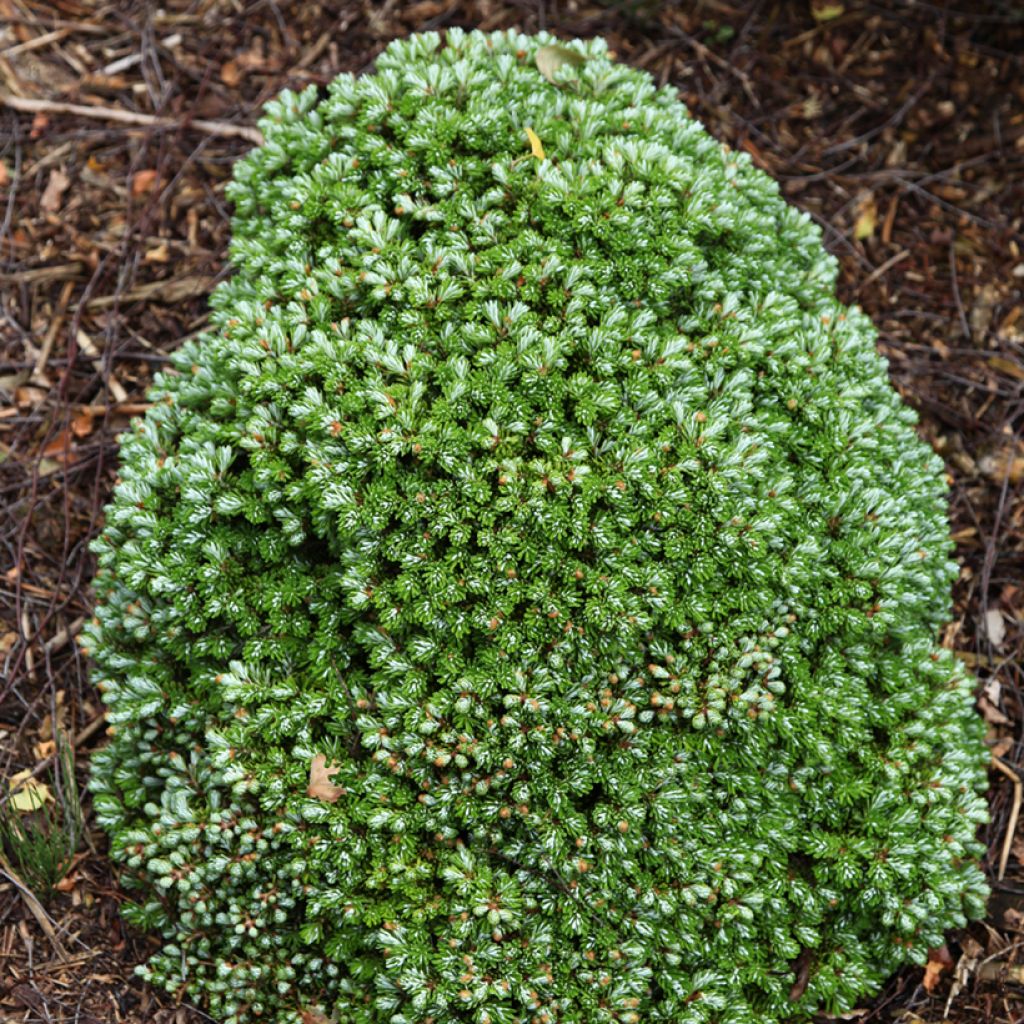

Abies koreana Silberkugel - Sapin de Corée Silberkugel
Abies koreana Silberkugel - Sapin de Corée Silberkugel
Abies koreana Silberkugel
Sapin de Corée Silberkugel
Why not try an alternative variety in stock?
View all →This plant carries a 24 months recovery warranty
More information
We guarantee the quality of our plants for a full growing cycle, and will replace at our expense any plant that fails to recover under normal climatic and planting conditions.
Does this plant fit my garden?
Set up your Plantfit profile →
Description
The Abies koreana 'Silberkugel' is a miniature cultivar of the Korean Fir that lives up to its name 'Silver Globe'. It is a conifer with a globose, irregular, very dense habit featuring very small green needles with a silvery underside. As it matures, it takes on the form of a spreading cushion. With its very slow growth, this variety requires no maintenance. It is perfectly suited to decorating rockeries and containers.
The Korean Fir, Abies koreana in Latin, is a conifer from the Pinaceae family. This species is endemic to the mountains of the far south of Korea and has become rare in its native country. In its natural environment, it reaches 6 to 9 metres in height and displays a compact habit. The 'Silberkugel' cultivar is a horticultural selection of very small size with a cushion-like habit. Its annual growth is around 2 cm. At 10 years old, it measures 25 cm tall by 35 cm wide. At maturity, the bush rarely exceeds 50 cm in height with an 80 cm spread. It has a very compact, more or less rounded, wavy habit. The foliage consists of numerous very short, slightly upright branches bearing tiny needles that curve upwards and are green on top and silvery underneath. Its small spring buds add a touch of brown velvet to its foliage.
The Abies koreana 'Silberkugel' excels among the stones of a rock garden. Thanks to its slow growth and moderate development, it fits easily into small spaces as well as in a container on the terrace. Its silhouette complements Japanese-inspired and contemporary designs. The striking graphic qualities of dwarf conifers deserve a more frequent inclusion in our gardens where they provide permanent structure. These rather discreet plants in summer regain prominence in winter when flowering is scarce. They mark pathways, patio borders, or fill the corner of a large shrub border. To accompany the Korean Fir 'Silberkugel', consider another cushion-shaped conifer like the Picea abies 'Little Gem' or, alternatively, an upright variety such as the picturesque false cypress 'Chirimen'. With their texture, ornamental grasses beautifully complement conifers. Consider a Stipa tenuifolia, Pennisetum 'Hameln Gold', or Miscanthus 'Apetitiv', for example.
Plant habit
Foliage
Botanical data
Abies
koreana
Silberkugel
Pinaceae
Sapin de Corée Silberkugel
Cultivar or hybrid
Other Abies
View all →Planting and care
Plant the Abies koreana 'Silberkugel' from September to November or from February to May in ordinary but well-drained, even stony and rocky, humus-enriched, not too dry soil, in dappled sunlight or partial shade. This variety is sensitive to heatwaves and scorching sun. Water the plants regularly during the first two to three summers following planting and hoe the soil well in summer. Korean Firs should be watered during prolonged periods of intense heat.
Planting period
Intended location
Care
Planting & care advice
This item has not been reviewed yet - be the first to leave a review about it.
Similar products
Haven't found what you were looking for?
Hardiness is the lowest winter temperature a plant can endure without suffering serious damage or even dying. However, hardiness is affected by location (a sheltered area, such as a patio), protection (winter cover) and soil type (hardiness is improved by well-drained soil).

Photo Sharing Terms & Conditions
In order to encourage gardeners to interact and share their experiences, Promesse de fleurs offers various media enabling content to be uploaded onto its Site - in particular via the ‘Photo sharing’ module.
The User agrees to refrain from:
- Posting any content that is illegal, prejudicial, insulting, racist, inciteful to hatred, revisionist, contrary to public decency, that infringes on privacy or on the privacy rights of third parties, in particular the publicity rights of persons and goods, intellectual property rights, or the right to privacy.
- Submitting content on behalf of a third party;
- Impersonate the identity of a third party and/or publish any personal information about a third party;
In general, the User undertakes to refrain from any unethical behaviour.
All Content (in particular text, comments, files, images, photos, videos, creative works, etc.), which may be subject to property or intellectual property rights, image or other private rights, shall remain the property of the User, subject to the limited rights granted by the terms of the licence granted by Promesse de fleurs as stated below. Users are at liberty to publish or not to publish such Content on the Site, notably via the ‘Photo Sharing’ facility, and accept that this Content shall be made public and freely accessible, notably on the Internet.
Users further acknowledge, undertake to have ,and guarantee that they hold all necessary rights and permissions to publish such material on the Site, in particular with regard to the legislation in force pertaining to any privacy, property, intellectual property, image, or contractual rights, or rights of any other nature. By publishing such Content on the Site, Users acknowledge accepting full liability as publishers of the Content within the meaning of the law, and grant Promesse de fleurs, free of charge, an inclusive, worldwide licence for the said Content for the entire duration of its publication, including all reproduction, representation, up/downloading, displaying, performing, transmission, and storage rights.
Users also grant permission for their name to be linked to the Content and accept that this link may not always be made available.
By engaging in posting material, Users consent to their Content becoming automatically accessible on the Internet, in particular on other sites and/or blogs and/or web pages of the Promesse de fleurs site, including in particular social pages and the Promesse de fleurs catalogue.
Users may secure the removal of entrusted content free of charge by issuing a simple request via our contact form.
The flowering period indicated on our website applies to countries and regions located in USDA zone 8 (France, the United Kingdom, Ireland, the Netherlands, etc.)
It will vary according to where you live:
- In zones 9 to 10 (Italy, Spain, Greece, etc.), flowering will occur about 2 to 4 weeks earlier.
- In zones 6 to 7 (Germany, Poland, Slovenia, and lower mountainous regions), flowering will be delayed by 2 to 3 weeks.
- In zone 5 (Central Europe, Scandinavia), blooming will be delayed by 3 to 5 weeks.
In temperate climates, pruning of spring-flowering shrubs (forsythia, spireas, etc.) should be done just after flowering.
Pruning of summer-flowering shrubs (Indian Lilac, Perovskia, etc.) can be done in winter or spring.
In cold regions as well as with frost-sensitive plants, avoid pruning too early when severe frosts may still occur.
The planting period indicated on our website applies to countries and regions located in USDA zone 8 (France, United Kingdom, Ireland, Netherlands).
It will vary according to where you live:
- In Mediterranean zones (Marseille, Madrid, Milan, etc.), autumn and winter are the best planting periods.
- In continental zones (Strasbourg, Munich, Vienna, etc.), delay planting by 2 to 3 weeks in spring and bring it forward by 2 to 4 weeks in autumn.
- In mountainous regions (the Alps, Pyrenees, Carpathians, etc.), it is best to plant in late spring (May-June) or late summer (August-September).
The harvesting period indicated on our website applies to countries and regions in USDA zone 8 (France, England, Ireland, the Netherlands).
In colder areas (Scandinavia, Poland, Austria...) fruit and vegetable harvests are likely to be delayed by 3-4 weeks.
In warmer areas (Italy, Spain, Greece, etc.), harvesting will probably take place earlier, depending on weather conditions.
The sowing periods indicated on our website apply to countries and regions within USDA Zone 8 (France, UK, Ireland, Netherlands).
In colder areas (Scandinavia, Poland, Austria...), delay any outdoor sowing by 3-4 weeks, or sow under glass.
In warmer climes (Italy, Spain, Greece, etc.), bring outdoor sowing forward by a few weeks.


































